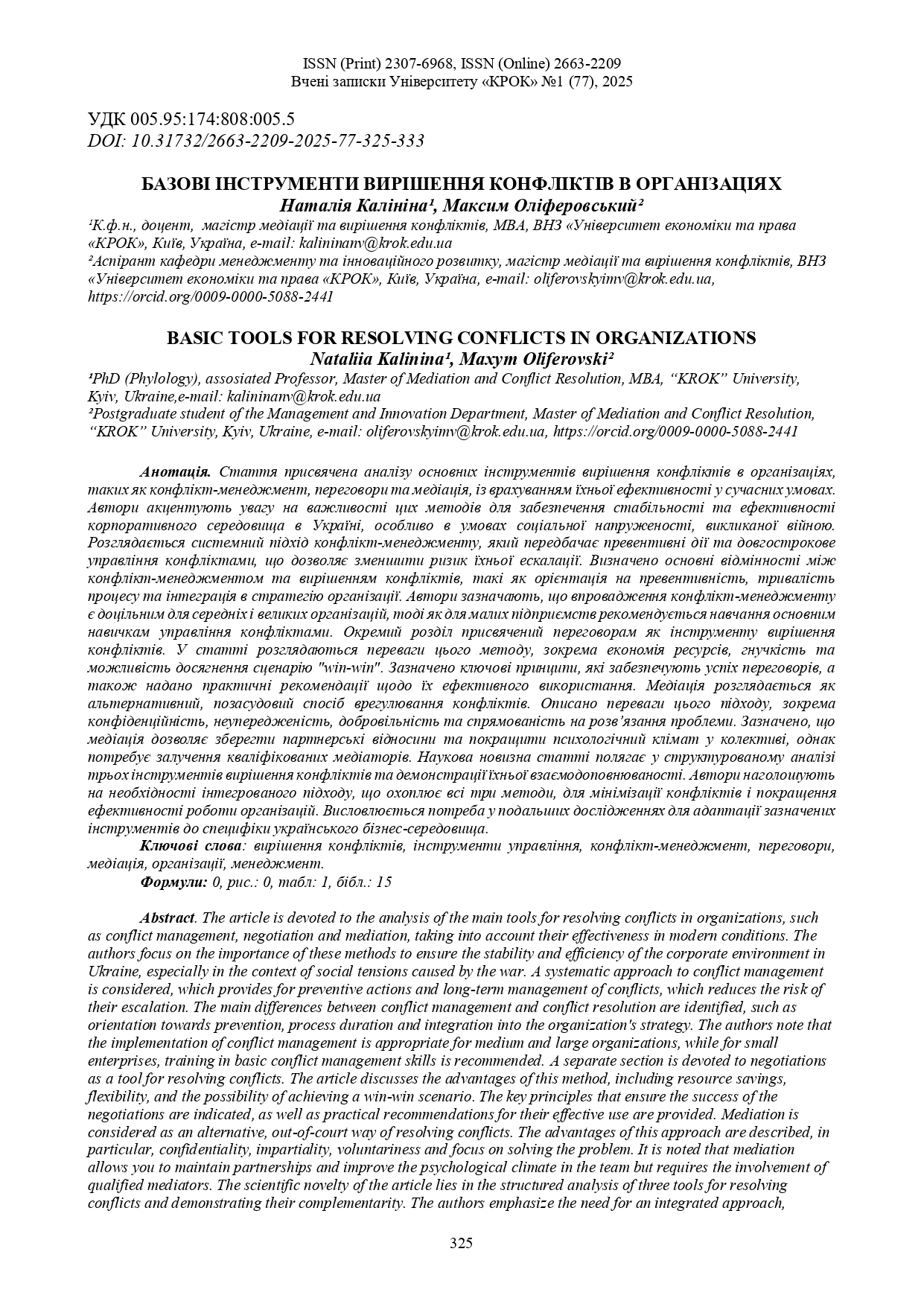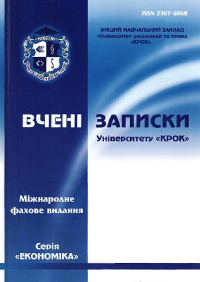BASIC TOOLS FOR RESOLVING CONFLICTS IN ORGANIZATIONS
DOI:
https://doi.org/10.31732/2663-2209-2025-77-325-333Keywords:
conflict resolution, management tools, conflict management, negotiations, mediation, organizations, managementAbstract
The article is devoted to the analysis of the main tools for resolving conflicts in organizations, such as conflict management, negotiation and mediation, taking into account their effectiveness in modern conditions. The authors focus on the importance of these methods to ensure the stability and efficiency of the corporate environment in Ukraine, especially in the context of social tensions caused by the war. A systematic approach to conflict management is considered, which provides for preventive actions and long-term management of conflicts, which reduces the risk of their escalation. The main differences between conflict management and conflict resolution are identified, such as orientation towards prevention, process duration and integration into the organization's strategy. The authors note that the implementation of conflict management is appropriate for medium and large organizations, while for small enterprises, training in basic conflict management skills is recommended. A separate section is devoted to negotiations as a tool for resolving conflicts. The article discusses the advantages of this method, including resource savings, flexibility, and the possibility of achieving a win-win scenario. The key principles that ensure the success of the negotiations are indicated, as well as practical recommendations for their effective use are provided. Mediation is considered as an alternative, out-of-court way of resolving conflicts. The advantages of this approach are described, in particular, confidentiality, impartiality, voluntariness and focus on solving the problem. It is noted that mediation allows you to maintain partnerships and improve the psychological climate in the team but requires the involvement of qualified mediators. The scientific novelty of the article lies in the structured analysis of three tools for resolving conflicts and demonstrating their complementarity. The authors emphasize the need for an integrated approach, encompassing all three methods, to minimize conflicts and improve the efficiency of organizations. The need for further research is expressed to adapt these tools to the specifics of the Ukrainian business environment.
Downloads

Downloads
Published
How to Cite
Issue
Section
License

This work is licensed under a Creative Commons Attribution-NonCommercial 4.0 International License.

